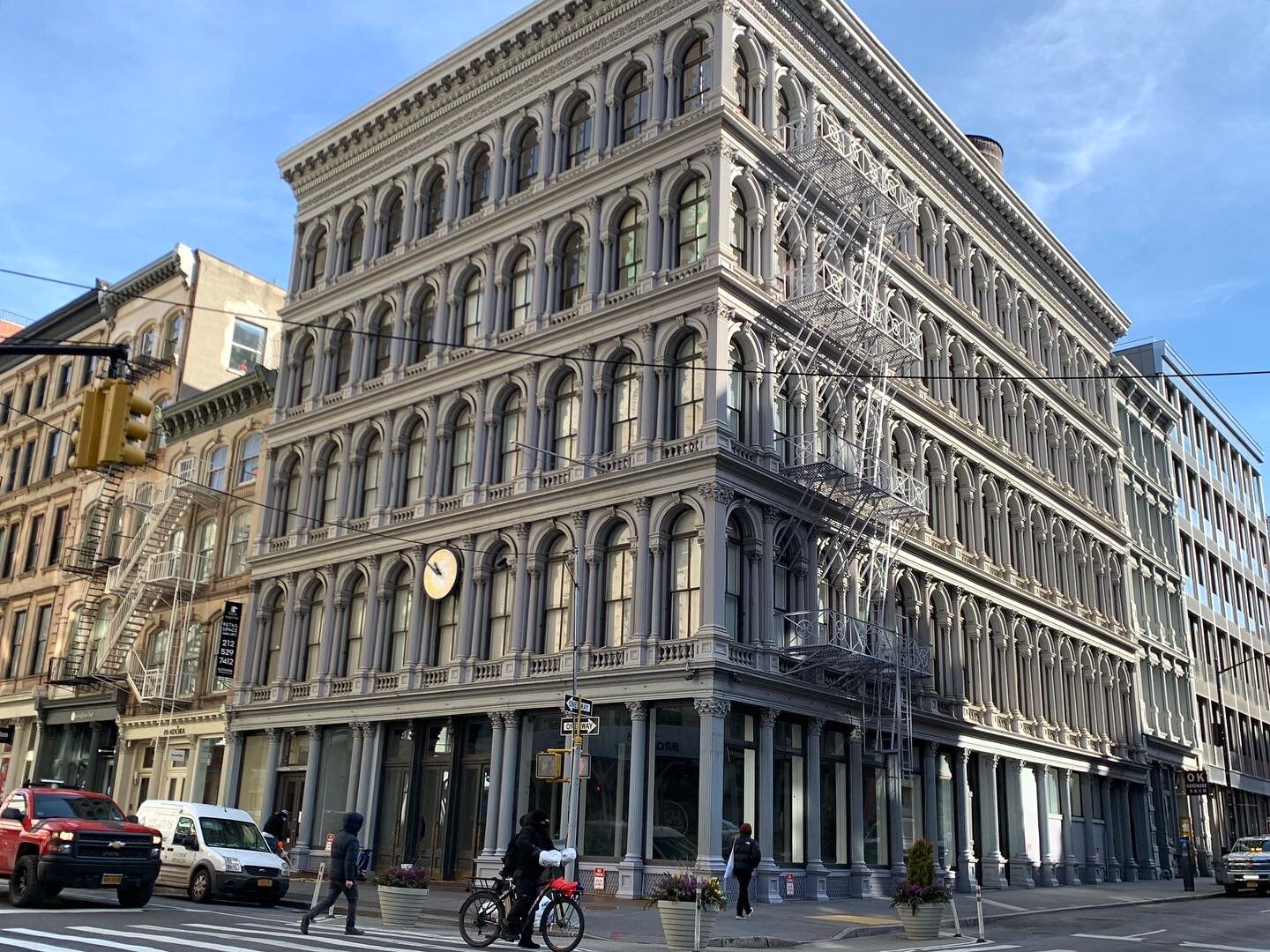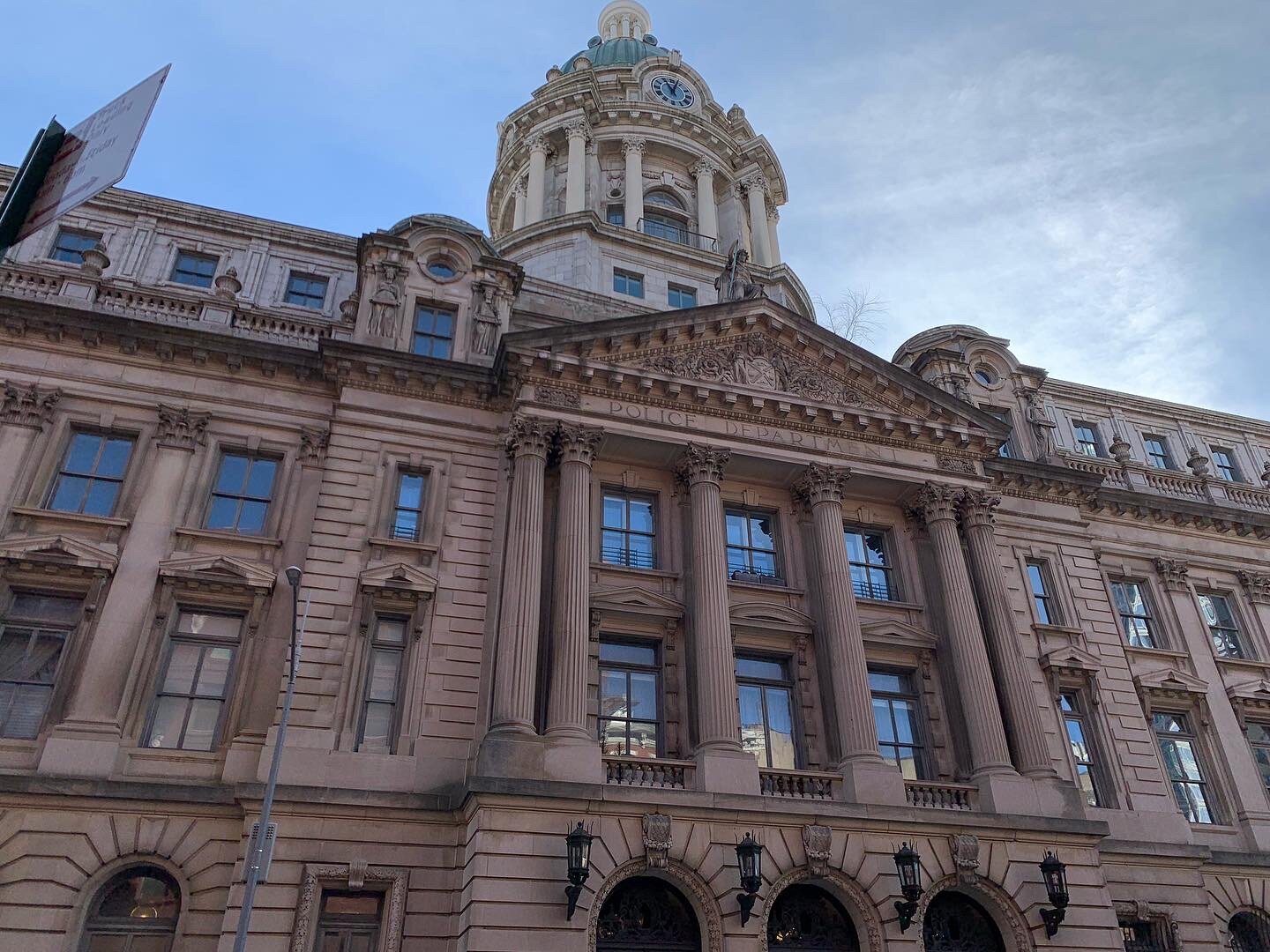What's THAT building?
/When I do tours in lower Manhattan, I always discuss the very famous landmarks that we pass. But I also get many other questions about the less-than-famous, but still striking and important, buildings we pass along the way. Here's a collection of some of these interesting buildings, with photos taken on my walk yesterday:
Photo 1: The Manhattan Municipal Building (today, formally known as The David N. Dinkins Municipal Building), completed in 1914 on plans by McKim, Mead & White. This building is just a block northeast of City Hall. After the 1898 consolidation of the five boroughs, it became clear that the now much, much larger city needed more space for its growing government. At 40 stories high, it is a rare municipal skyscraper. It was constructed at the end of the nationwide City Beautiful movement, which pushed for grand civic architecture: beauty not only for its own sake, but also to create moral and civic virtue among urban populations. The statue atop the building is known as Civic Fame.
2: The E. V. Haughwout Building stands out among the many buildings of the SoHo-Cast Iron Historic District. Built in 1857, it originally housed Eder V. Haughwout's fashionable emporium. What the building is most famous for is having been the home of the world's first passenger elevator when it opened, a hydraulic lift designed by Elisha Graves Otis (it was powered by a steam engine in the basement). At just five stories, the building hardly required an elevator, but Haughwout knew that people would come to see the new novelty, and stay to buy his goods. In modern times, the building housed an Artists & Fleas location on the ground floor, with offices above.
3: 240 Centre Street, as the old signage on the building reads, was formerly the headquarters of the New York City Police Department (from 1909 to 1973). Much like the Municipal Building, after consolidation, the city required a bigger HQ for its police. After the police moved downtown, the building became a landmark, and was eventually converted into luxury condominiums in 1988. Recent sale prices in the building range from $1.6M last year for a 1-bedroom to $27.9M for a 5,500 ft² penthouse in 2017.
4: This famous corner building is the financial district (at 56 Beaver St) is best known as the home of Delmonico's. The original Delmonico's opened in 1827 in this area, before eventually moving to this famous corner, where it gained a nationwide reputation. This current building came decades later. Delmonico's is credited with being one of the first American restaurants to allow patrons to order from a menu à la carte (ordering individual dishes), as opposed to table d'hôte (a prix fixe menu offering that had previously been the norm). The corner building also shows the landmarked colonial-era street pattern of this part of Manhattan. Due to its look, it is nowadays often mistaken as the building used for the facade of the fictional The Continental hotel in the "John Wick" movies which is actually a few blocks north on Beaver Street...
5: 1 Wall Street Court, also known as the Beaver Building, was once the home of the New York Cocoa Exchange... and in the "John Wick" films is a hotel for assassins run with strict rules by its manager, Winston. The building dates back to 1904. Most of the building today is residential, with restaurant space on the main floor. Most of the interior scenes (and roof scenes) for the Continental were shot elsewhere-- from the old Cunard Building to Rockefeller Center -- or on sets.
6: 32 Avenue of the Avenues, also known as the AT&T Long Distance Building, is an Art Deco telecommunications building completed in 1932. The building has two twin antennas on the roof. No longer owned by AT&T, it has several high-profile tenants today, including several of the city's top FM radio stations. It is in Tribeca, at the intersections of 6th Ave, Lispenard St, and Beach St. Like many Art Deco buildings, its landmarked lobby features gorgeous murals and mosaics.
7: 33 Thomas Street, formerly known as the AT&T Long Lines Building, is the Brutalist cousin to the previous building, and was completed in 1974. It is said to be one of the most secure buildings in America, and was designed to be self-sufficient with its own gas and water supplies along with generation capabilities and protected from nuclear fallout for up to two weeks after a nuclear blast. It is still a secure telecommunications building, with many rumors for years about other uses, leading to pop-culture depictions ranging from the obscure 1979 film "Winter Kills" to episodes of "The X-Files" and "Mr. Robot" in modern times. Modern exposes peg it as the likely location of a NSA mass surveillance hub codenamed TITANPOINTE.
8: The "Jenga Building" is what locals have dubbed this Tribeca residential skyscraper at 56 Leonard Street. Completed in 2017, it was designed by the Swiss architecture firm Herzog & de Meuron, which described the design inspiration as "houses stacked in the sky." With most modern residential skyscrapers adopting fairly uniform designs, the unique architecture of this building has helped it stand out amidst an increasingly crowded skyline (you can its much taller neighbor to the south-- One World Trade Center-- in this shot). Recent sales price have ranged from $2.975M for a 1-bedroom to $21.5M for the 5,252 ft² top penthouse on the 57th floor.
9: A look up at "houses stacked in the sky" at 56 Leonard.
10: This gorgeous landmark is right across the street from our first building, at 31 Chambers Street. The gorgeous Beaux Arts building was completed in 1907 as the Hall of Records, and today is The Surrogate's Courthouse. The building today also houses the city's Municipal Archives in the basement, which is open to the public. There are dozens of sculptures on the facade, including eminent figures from the city's past, such as Peter Stuyvesant, DeWitt Clinton, David Pietersen De Vries, and mayors Caleb Heathcote, Abram Stevens Hewitt, Philip Hone, Cadwallader David Colden, and James Duane. The building has (in this guide's opinion) one of the most gorgeous lobbies in New York City.
That's it!
Anyone have a favorite building in lower Manhattan?













